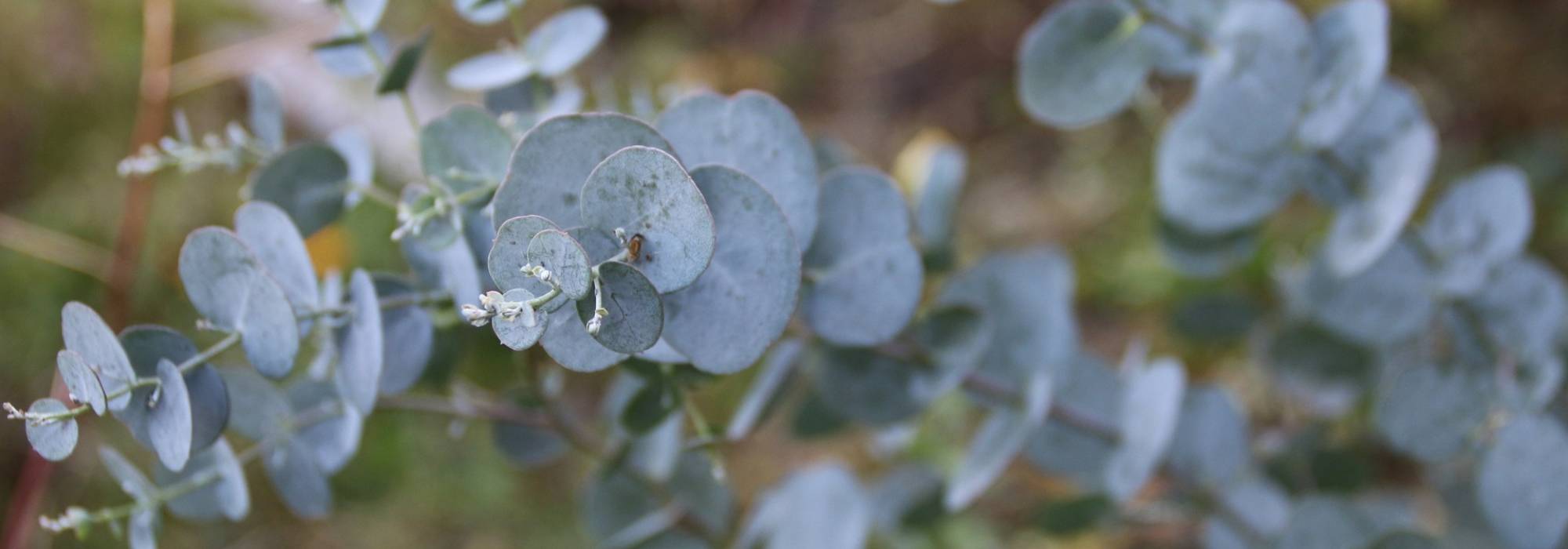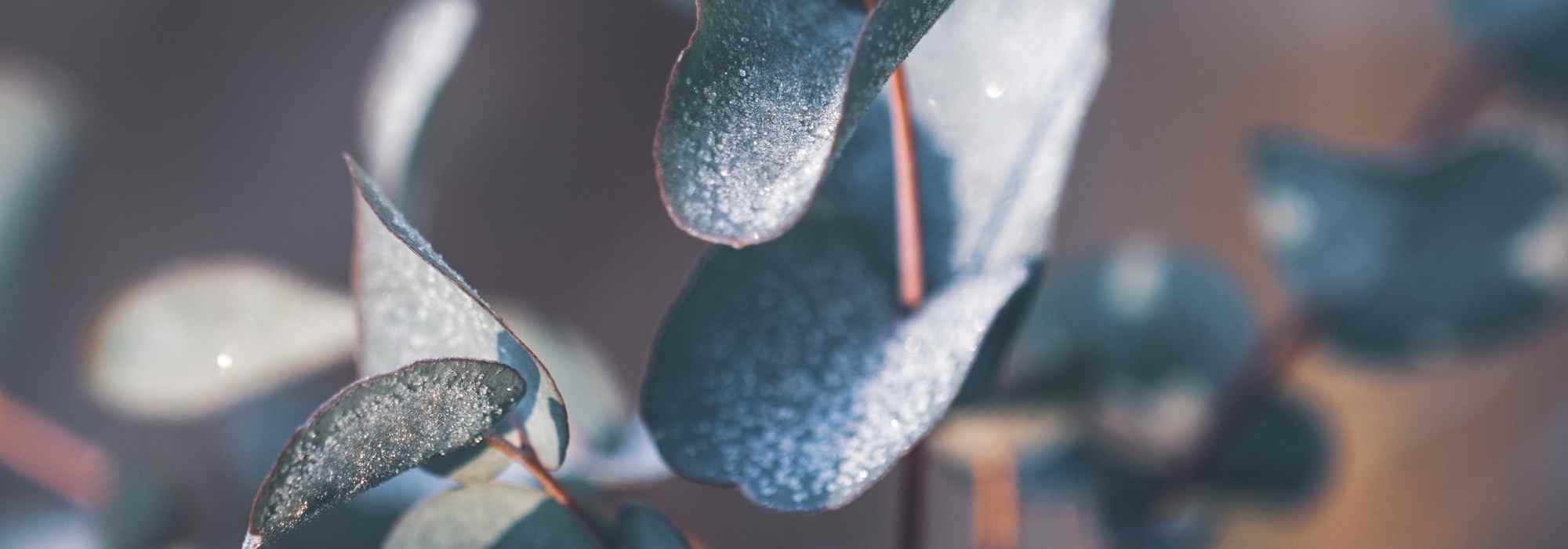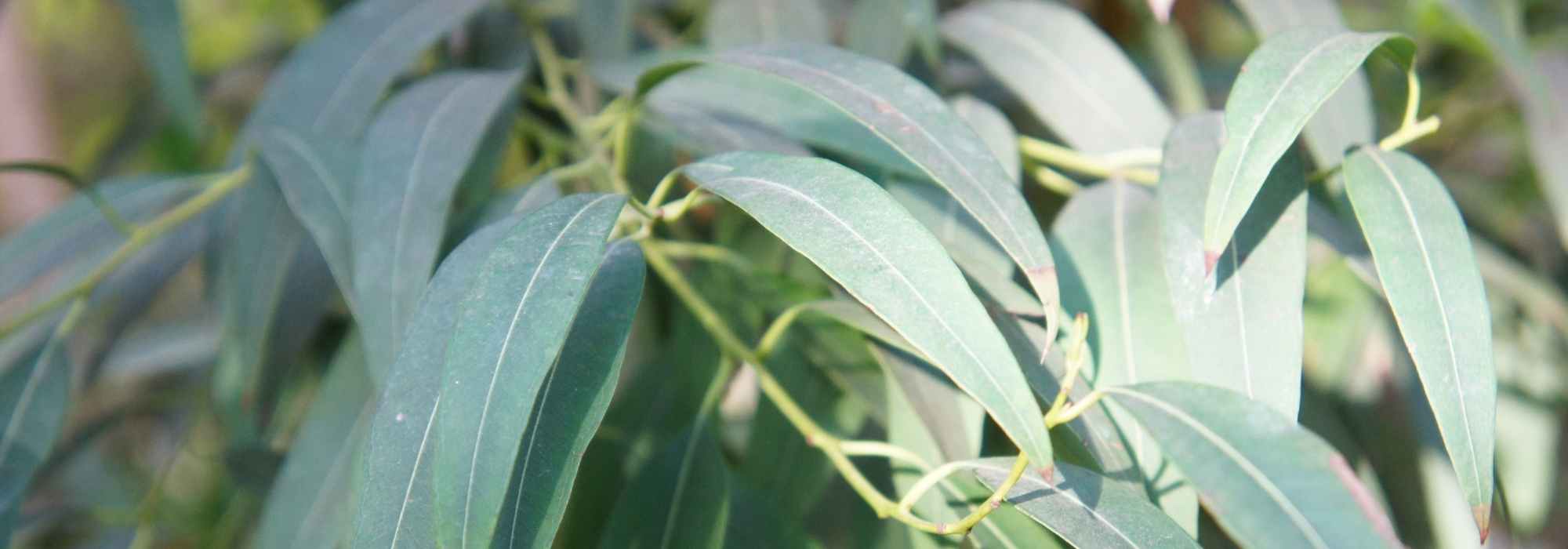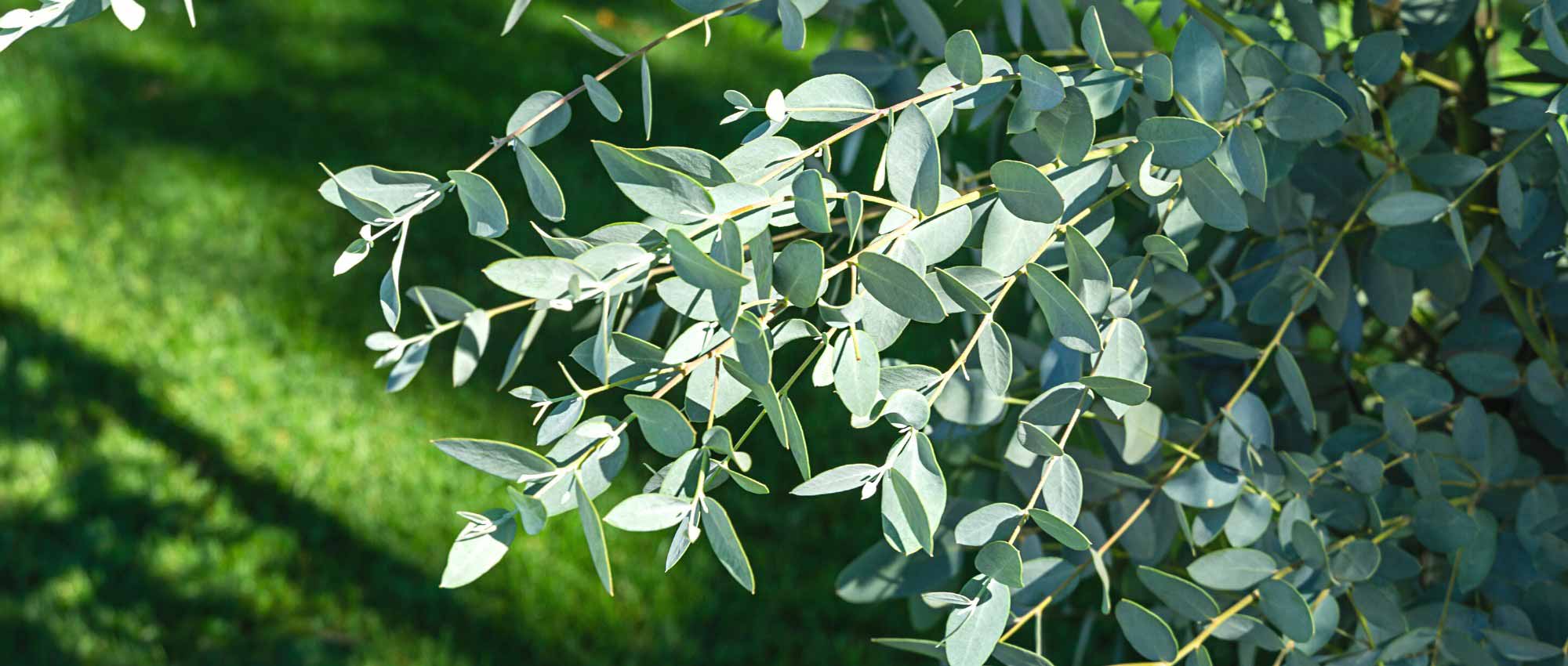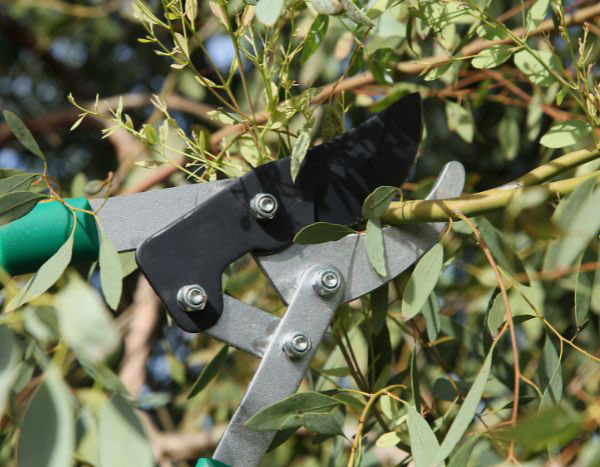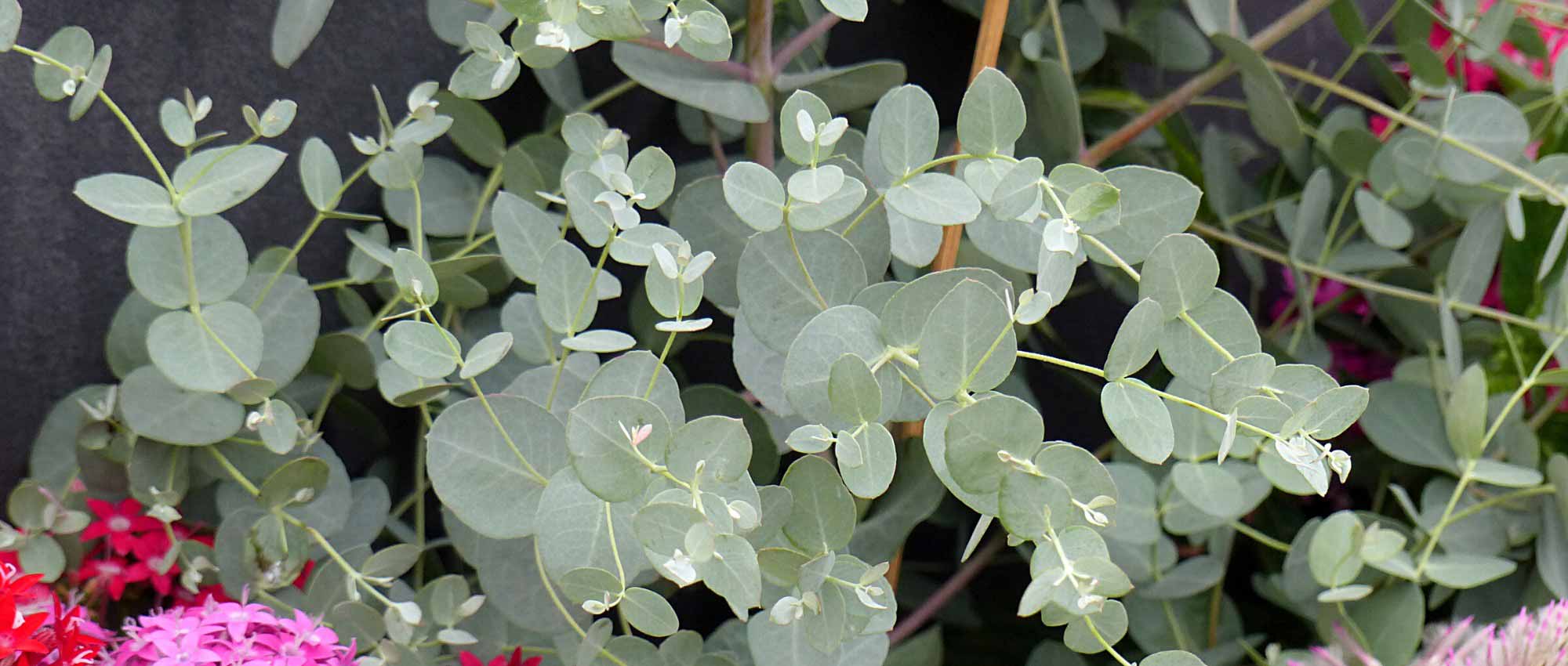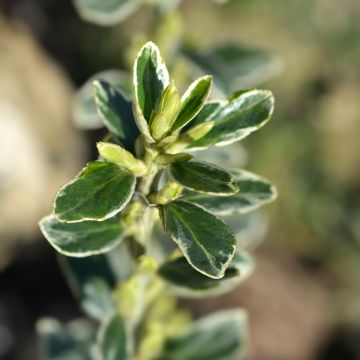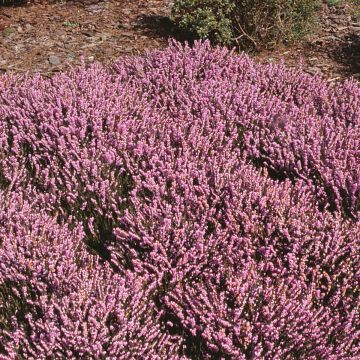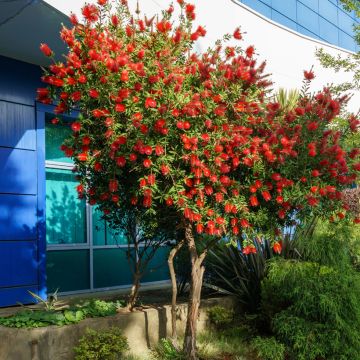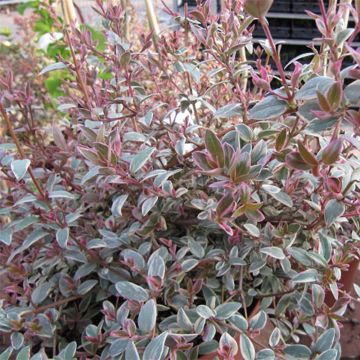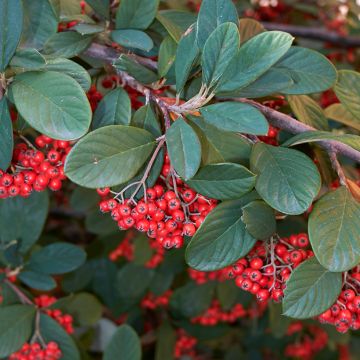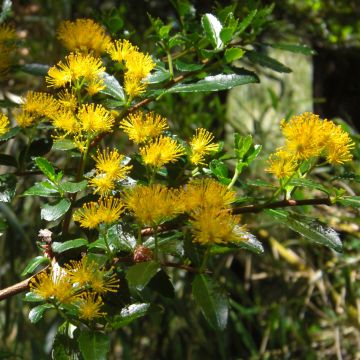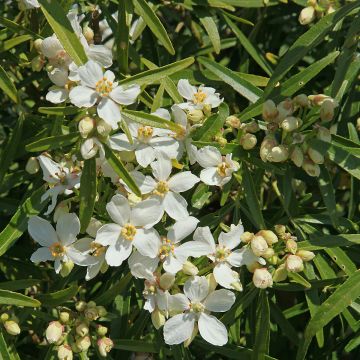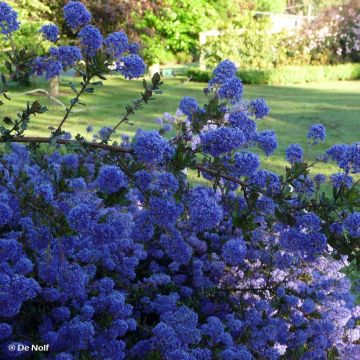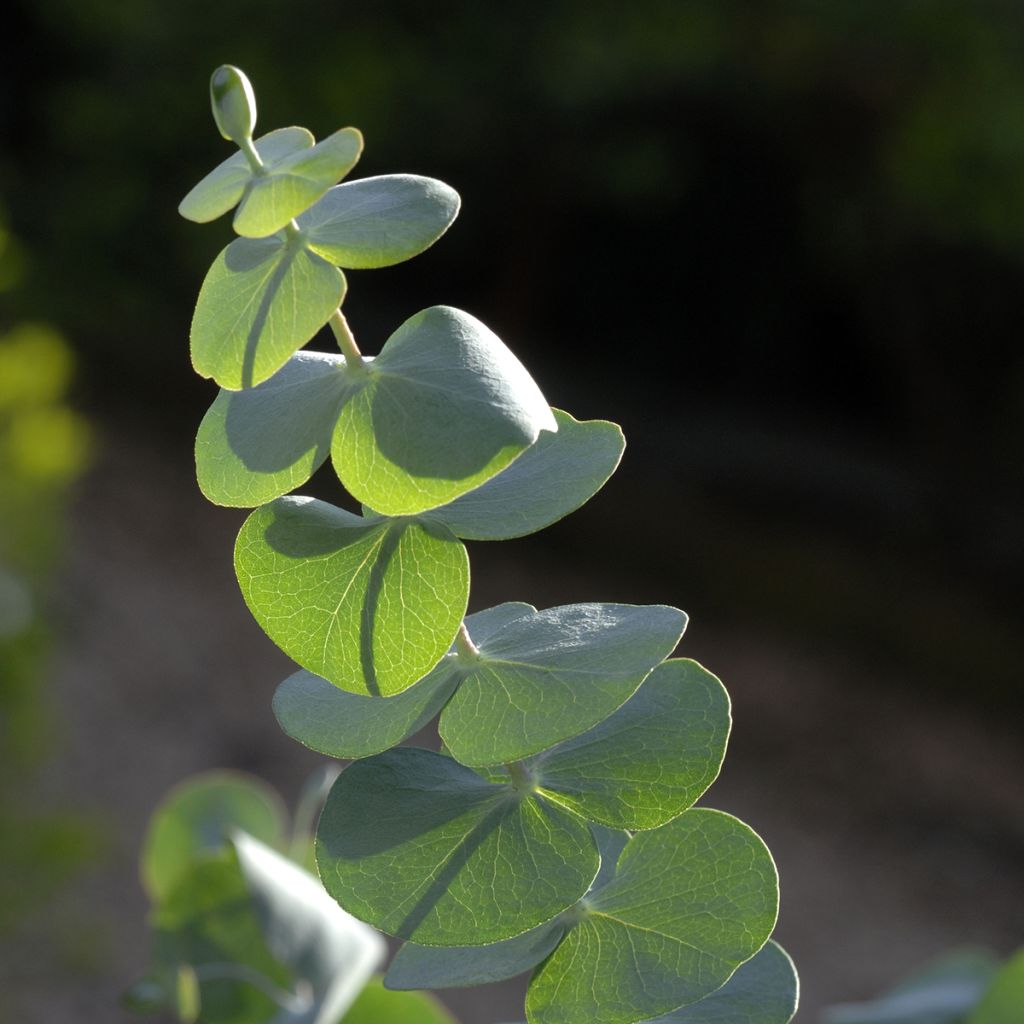

Eucalyptus pulverulenta Baby Blue - Silver-leaved Mountain Gum
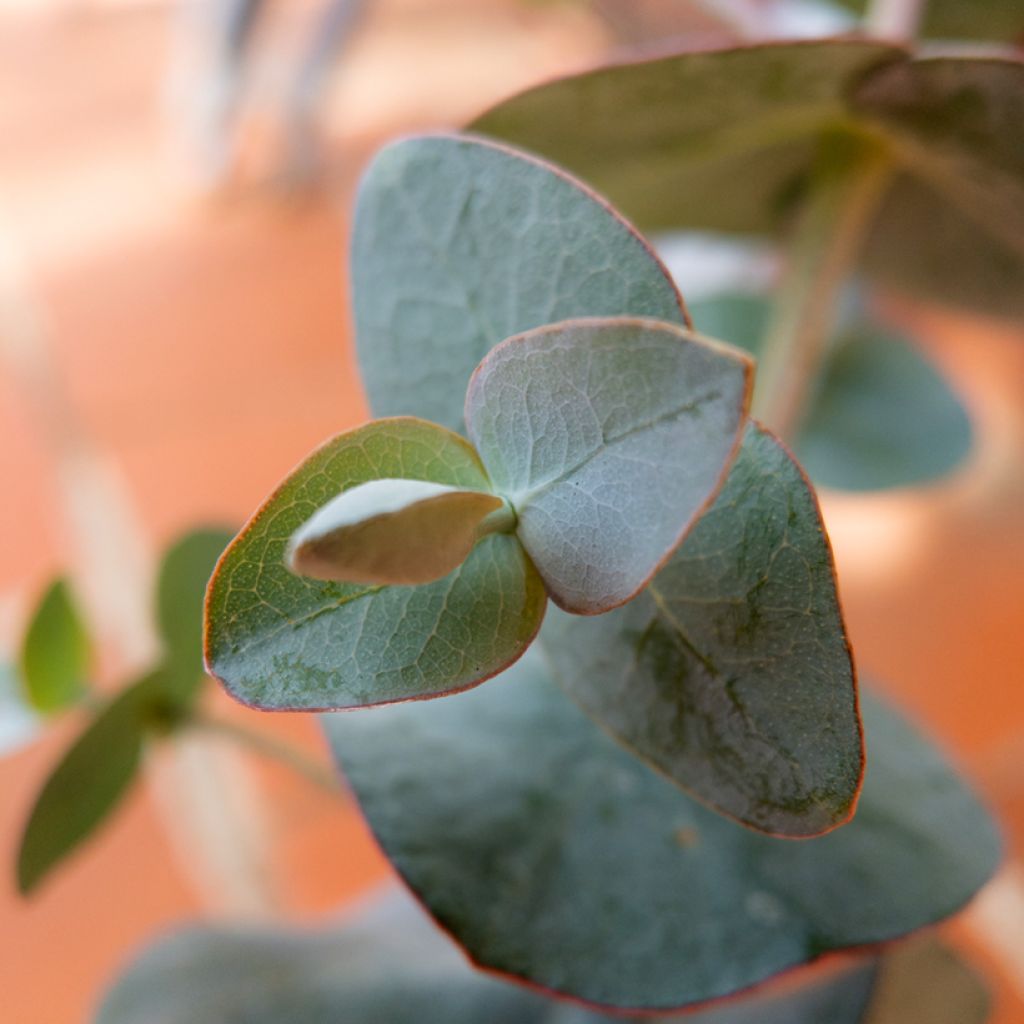

Eucalyptus pulverulenta Baby Blue - Silver-leaved Mountain Gum


Eucalyptus pulverulenta Baby Blue - Silver-leaved Mountain Gum
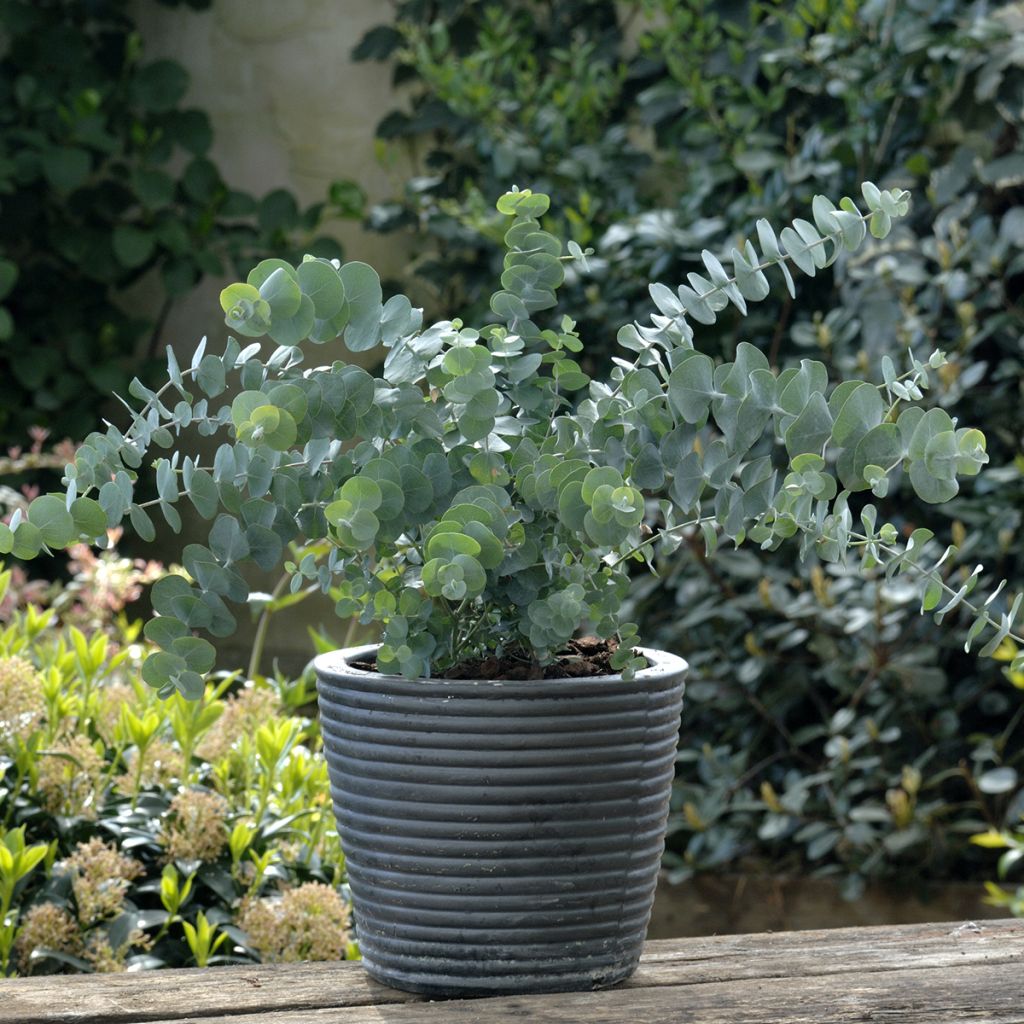

Eucalyptus pulverulenta Baby Blue - Silver-leaved Mountain Gum
Eucalyptus pulverulenta Baby Blue - Silver-leaved Mountain Gum
Eucalyptus pulverulenta Baby Blue Spiral
Silver-leaved Mountain Gum, Powdered Gum
Received only 4 seeds, not 15 as advertised.
Maxime , 05/08/2024
Special offer!
Receive a €20 voucher for any order over €90 (excluding delivery costs, credit notes, and plastic-free options)!
1- Add your favorite plants to your cart.
2- Once you have reached €90, confirm your order (you can even choose the delivery date!).
3- As soon as your order is shipped, you will receive an email containing your voucher code, valid for 3 months (90 days).
Your voucher is unique and can only be used once, for any order with a minimum value of €20, excluding delivery costs.
Can be combined with other current offers, non-divisible and non-refundable.
Home or relay delivery (depending on size and destination)
Schedule delivery date,
and select date in basket
This plant carries a 6 months recovery warranty
More information
We guarantee the quality of our plants for a full growing cycle, and will replace at our expense any plant that fails to recover under normal climatic and planting conditions.
Would this plant suit my garden?
Set up your Plantfit profile →
Description
Eucalyptus pulverulenta 'Baby Blue' is a dwarf form of Eucalyptus pulverulenta, also known as Silver Mountain Gum. Developed in California in the 1950s, this variety was initially selected for floristry due to the density and fragrance of its very blue foliage. Its ease of cultivation, relative hardiness, and compact habit have made it a popular choice for gardens. It also has two additional advantages: its spring flowering, which resembles cream-white pompoms nestled among its small leaves, and its beautiful bark that peels off in flakes over time. Similar to Eucalyptus gunni, it is slightly less hardy. This plant will create a little corner of paradise in our gardens and terraces. It is ideal for small spaces and adapts to all well-drained soils without excessive limestone content.
Eucalyptus pulverulenta 'Baby Blue', sometimes marketed as 'Little Boy Blue', is a small bush of the Myrtaceae family, descended from Eucalyptus pulverulenta. This beautiful species, of modest size for the genus, has a somewhat anarchic pyramidal habit and originates from two small stations, the first located in the Blue Mountains west of Sydney, and the second in the southern Tablelands. 'Baby Blue' is distinguished by its small size and denser, more regular habit. This large bush will reach 2.5m to 3m (8.2 ft to 9.8 ft) in height and 1.5m to 2m (4.9 ft to 6.6 ft) in width, depending on growing conditions and climate. Its growth rate is moderate.
It has persistent foliage that retains its juvenile appearance throughout its life. The adult foliage, rarely observed, is lanceolate, pointed, and the same blue-silver colour. Leaves, young stems, and inflorescences are covered with a white powder that gives the entire plant a bright appearance, especially in spring. It is this white bloom that earned the species its name "pulverulenta". The green-blue-silver leaves, small in size, round, and highly aromatic when crushed, completely sheathe the stems. Flowering occurs between May and June in our climates, on plants that are 3 or 4 years old. These are actually apetalous flowers, spherical in shape, composed of numerous tightly packed cream-white stamens resembling pompoms. They bloom between the leaves, grouped in threes along the branches, and are followed by the formation of large green cone-shaped fruits, also covered in powder, which turn brown when ripe. The bark, which displays a ring pattern from a young age, peels off in large ribbons over the years. It is grey-white speckled with brown. It tolerates pruning very well, even close to the ground. It has a well-developed lignotuber (swollen reserve organ with numerous dormant buds) at the collar level, which allows it to regenerate vigorously after frost, fire, or severe pruning.
Eucalyptus pulverulenta 'Baby Blue' also tolerates semi-mountainous and semi-arid climates, but its cold resistance is limited to short, late-night frosts, around -10° C (14° F), if planted in well-drained soil that does not retain moisture. Curiously, Eucalyptus trees are generally heavy water consumers, even in winter, contributing to soil drying. 'Baby Blue' thrives in scenes dominated by white or silver. It brings an exotic touch to gardens when planted as a hedge with other shrubs like Callistemons or Leptospermums, in groups, or as a standalone specimen. On balconies or terraces, it adds a touch of blue. It is easy to maintain, requiring no pruning, but it can be cut back very short to remain compact. Finally, it is an elegant plant at all stages of growth, with magnificent branches that make beautiful bouquets. The ideal climate for this small tree is coastal areas (at least 100m (328 ft) from the shore), where cold spells are light and short-lived. Elsewhere, it is advisable to store it in a cool and bright room.
Benefits: Eucalyptus leaves, which are rich in essential oil, are used in various forms (infusion, tincture, oil, etc.) to treat respiratory ailments, rheumatism, migraines, fatigue, and as an antiseptic.
Eucalyptus pulverulenta Baby Blue - Silver-leaved Mountain Gum in pictures
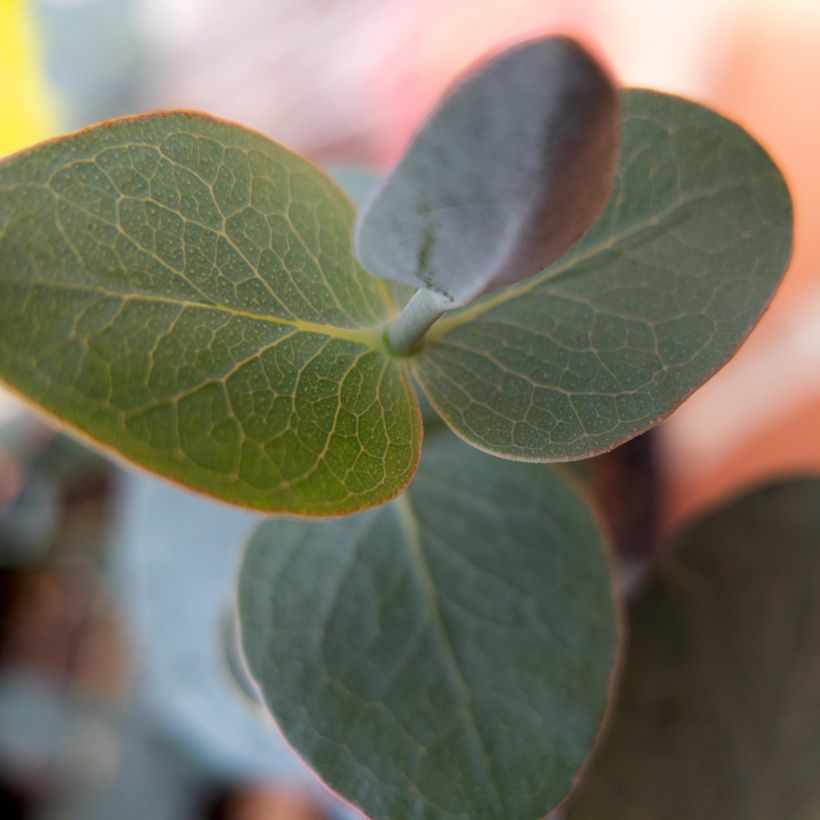



Flowering
Foliage
Plant habit
Botanical data
Eucalyptus
pulverulenta
Baby Blue Spiral
Myrtaceae
Silver-leaved Mountain Gum, Powdered Gum
Cultivar or hybrid
Planting and care
Plant in early spring, in well-drained, dry, not too chalky soil, in a warm and sunny position but sheltered from strong and cold winds. In mild climates, plant it in the ground, taking care of the drainage with coarse sand, pumice or non-chalky gravel. Then let nature take its course. Growth is quite rapid and there is no need to prune. Water regularly for the first two years, then the bush can do without watering in summer once well established. Fertilisation is not recommended. In March, you can prune it back to ground level to form a beautiful, bushy shrub, about 2m (6.6 ft) tall.
It grows well in pots, which should be large enough and filled with a light and rich substrate. Watering should be monitored. Store in a cold greenhouse, or in an unheated and bright room in winter, like a rose laurel.
Sowing period
Intended location
Planting & care advice
-
, onOrder confirmed
Reply from on Promesse de fleurs
Similar products
Haven't found what you were looking for?
Hardiness is the lowest winter temperature a plant can endure without suffering serious damage or even dying. However, hardiness is affected by location (a sheltered area, such as a patio), protection (winter cover) and soil type (hardiness is improved by well-drained soil).

Photo Sharing Terms & Conditions
In order to encourage gardeners to interact and share their experiences, Promesse de fleurs offers various media enabling content to be uploaded onto its Site - in particular via the ‘Photo sharing’ module.
The User agrees to refrain from:
- Posting any content that is illegal, prejudicial, insulting, racist, inciteful to hatred, revisionist, contrary to public decency, that infringes on privacy or on the privacy rights of third parties, in particular the publicity rights of persons and goods, intellectual property rights, or the right to privacy.
- Submitting content on behalf of a third party;
- Impersonate the identity of a third party and/or publish any personal information about a third party;
In general, the User undertakes to refrain from any unethical behaviour.
All Content (in particular text, comments, files, images, photos, videos, creative works, etc.), which may be subject to property or intellectual property rights, image or other private rights, shall remain the property of the User, subject to the limited rights granted by the terms of the licence granted by Promesse de fleurs as stated below. Users are at liberty to publish or not to publish such Content on the Site, notably via the ‘Photo Sharing’ facility, and accept that this Content shall be made public and freely accessible, notably on the Internet.
Users further acknowledge, undertake to have ,and guarantee that they hold all necessary rights and permissions to publish such material on the Site, in particular with regard to the legislation in force pertaining to any privacy, property, intellectual property, image, or contractual rights, or rights of any other nature. By publishing such Content on the Site, Users acknowledge accepting full liability as publishers of the Content within the meaning of the law, and grant Promesse de fleurs, free of charge, an inclusive, worldwide licence for the said Content for the entire duration of its publication, including all reproduction, representation, up/downloading, displaying, performing, transmission, and storage rights.
Users also grant permission for their name to be linked to the Content and accept that this link may not always be made available.
By engaging in posting material, Users consent to their Content becoming automatically accessible on the Internet, in particular on other sites and/or blogs and/or web pages of the Promesse de fleurs site, including in particular social pages and the Promesse de fleurs catalogue.
Users may secure the removal of entrusted content free of charge by issuing a simple request via our contact form.
The flowering period indicated on our website applies to countries and regions located in USDA zone 8 (France, the United Kingdom, Ireland, the Netherlands, etc.)
It will vary according to where you live:
- In zones 9 to 10 (Italy, Spain, Greece, etc.), flowering will occur about 2 to 4 weeks earlier.
- In zones 6 to 7 (Germany, Poland, Slovenia, and lower mountainous regions), flowering will be delayed by 2 to 3 weeks.
- In zone 5 (Central Europe, Scandinavia), blooming will be delayed by 3 to 5 weeks.
In temperate climates, pruning of spring-flowering shrubs (forsythia, spireas, etc.) should be done just after flowering.
Pruning of summer-flowering shrubs (Indian Lilac, Perovskia, etc.) can be done in winter or spring.
In cold regions as well as with frost-sensitive plants, avoid pruning too early when severe frosts may still occur.
The planting period indicated on our website applies to countries and regions located in USDA zone 8 (France, United Kingdom, Ireland, Netherlands).
It will vary according to where you live:
- In Mediterranean zones (Marseille, Madrid, Milan, etc.), autumn and winter are the best planting periods.
- In continental zones (Strasbourg, Munich, Vienna, etc.), delay planting by 2 to 3 weeks in spring and bring it forward by 2 to 4 weeks in autumn.
- In mountainous regions (the Alps, Pyrenees, Carpathians, etc.), it is best to plant in late spring (May-June) or late summer (August-September).
The harvesting period indicated on our website applies to countries and regions in USDA zone 8 (France, England, Ireland, the Netherlands).
In colder areas (Scandinavia, Poland, Austria...) fruit and vegetable harvests are likely to be delayed by 3-4 weeks.
In warmer areas (Italy, Spain, Greece, etc.), harvesting will probably take place earlier, depending on weather conditions.
The sowing periods indicated on our website apply to countries and regions within USDA Zone 8 (France, UK, Ireland, Netherlands).
In colder areas (Scandinavia, Poland, Austria...), delay any outdoor sowing by 3-4 weeks, or sow under glass.
In warmer climes (Italy, Spain, Greece, etc.), bring outdoor sowing forward by a few weeks.






























